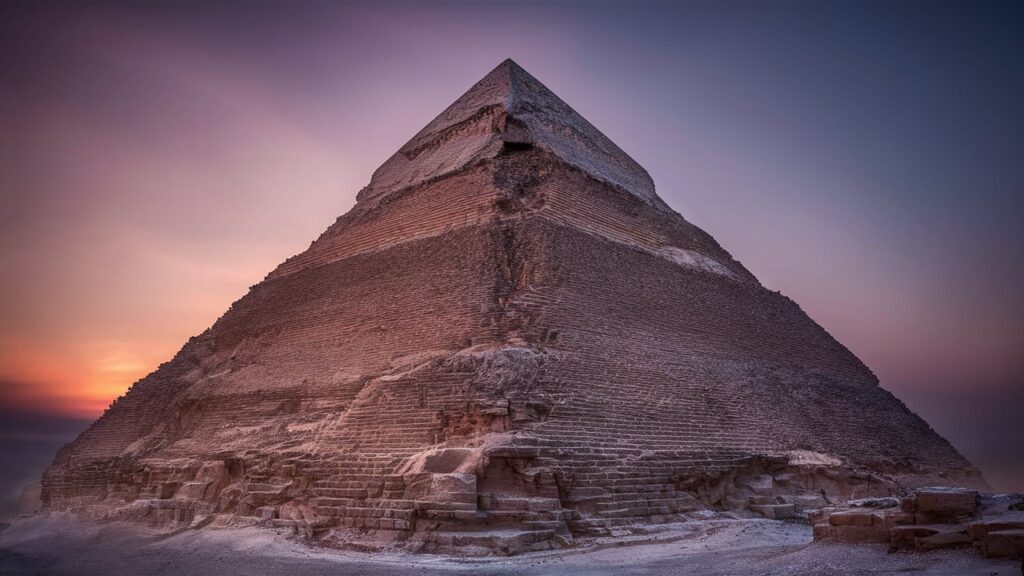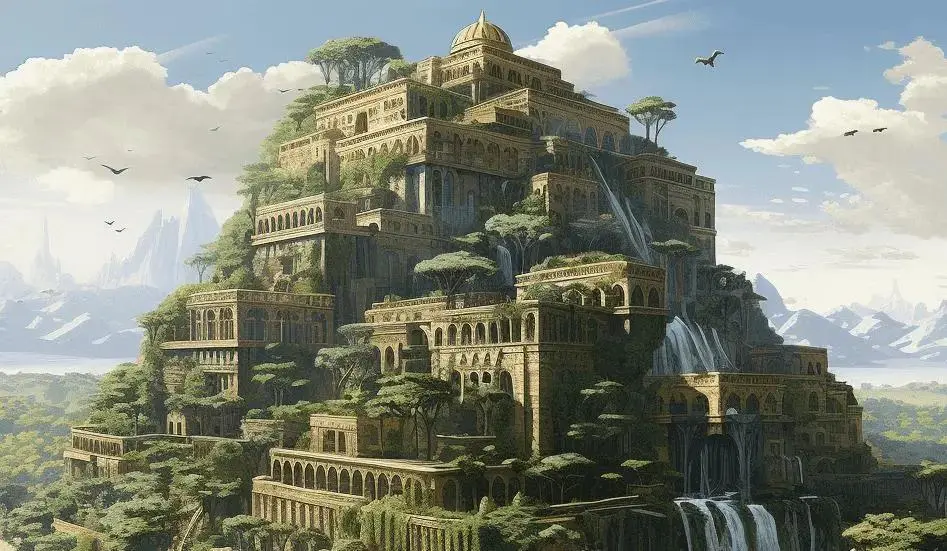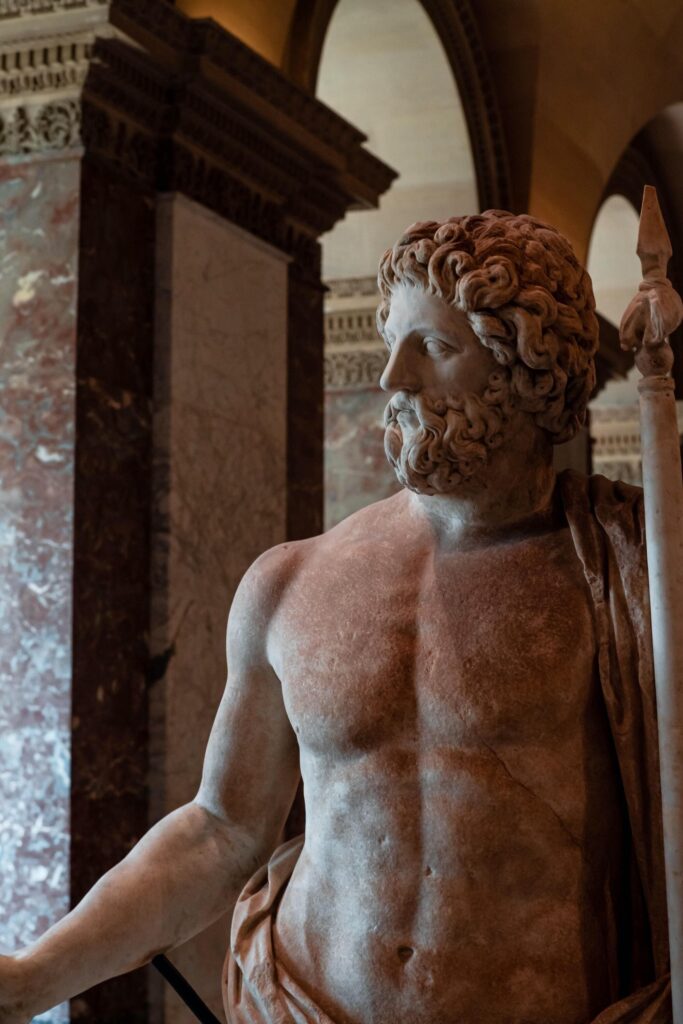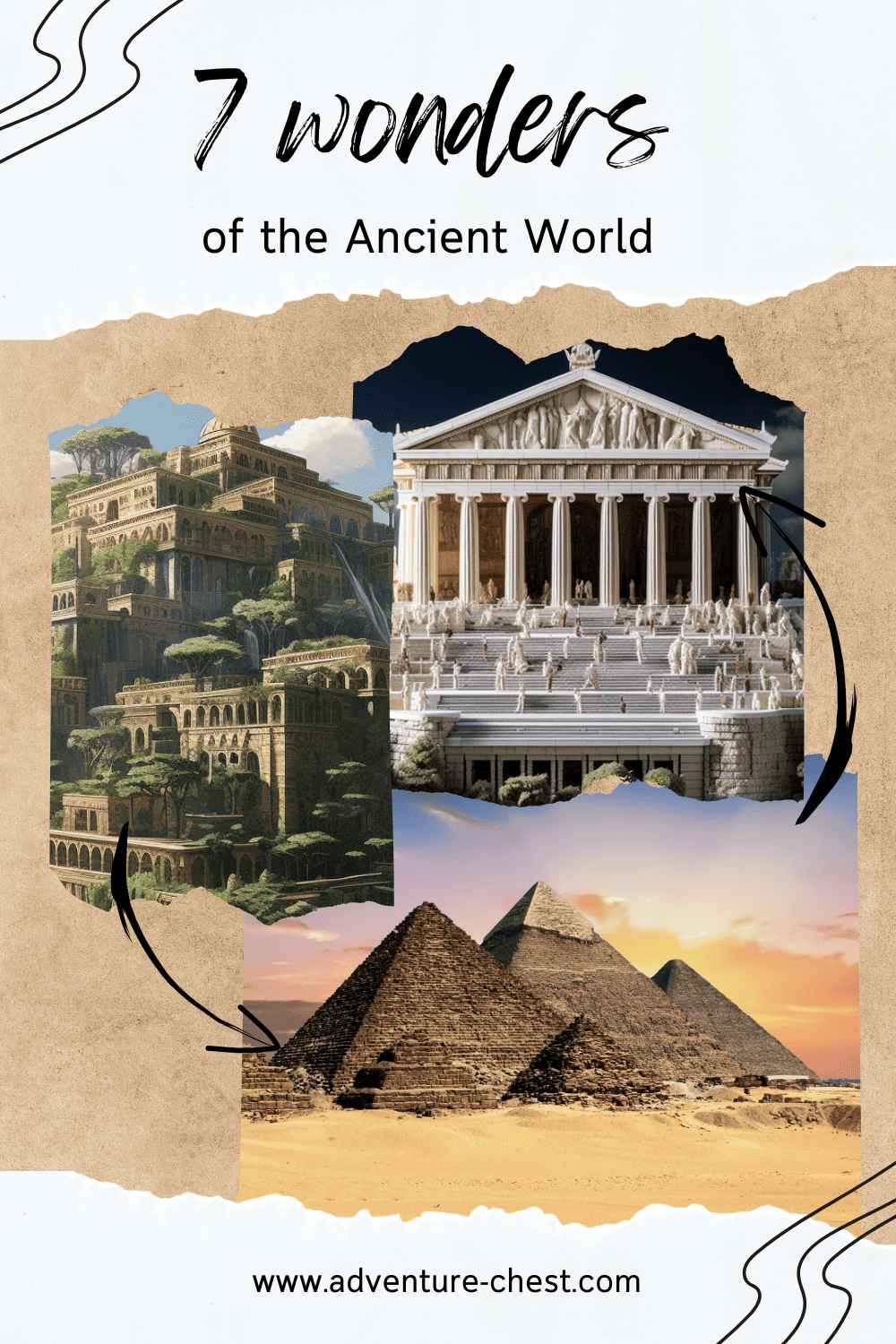The concept of the Seven Wonders of the World was probably the first travel bucket list ever invented. Here we will try to look at the so-called “original” 7 wonders of the world or 7 wonders of the ancient world. Each of them has captured the human imagination for centuries.
Disclaimer: almost all of them have vanished already, except for one.
Nevertheless, these structures stood tall and proud, defying time itself. They were like the Indiana Jones of the architectural world.
1. The Great Pyramid of Giza, Egypt
The Great Pyramid of Giza is located on the Giza Plateau in Egypt. Unfortunately, it is the only original wonder of the world that has survived until today.

Being a tomb for Pharaoh Khufu around 2560 BCE, it stands as a testament to the craftsmanship of the ancient Egyptians. Its precise alignment with cardinal points and colossal stone blocks leaves visitors marveling at the mysteries of its construction. The accuracy of the construction spanned many myths as to the alien origin of the pyramids.
However, recent studies have uncovered an almost extinct Nile branch, providing a very credible theory for the pyramid construction.
Location: Luckily, The Great Pyramid of Giza, or the Pyramid of Khufu is the only wonder of the ancient world that you can still see. It’s located in Giza, on the outskirts of Cairo (Egypt).
The Giza Plateau is home to three major pyramids and several smaller structures. These pyramids are among the most iconic and well-preserved structures from ancient Egypt.
The Great Pyramid of Khufu (Cheops):
Pharaoh: Khufu (also known as Cheops)
Construction Period: Around 2560 BCE
Height: Originally around 146.6 meters (481 feet)
The Great Pyramid of Khufu is the largest and most famous pyramid on the Giza Plateau. It was built as a monumental tomb for Pharaoh Khufu during the Fourth Dynasty of the Old Kingdom.

The pyramid’s construction involved millions of limestone and granite blocks, carefully cut and arranged to form its iconic stepped structure. The pyramid complex includes three smaller pyramids, a mortuary temple, a causeway, and boat pits. The pyramid’s internal structure contains chambers, corridors, and a granite sarcophagus in the King’s Chamber.
Definitely, the pyramids are far from being the only thing that Egypt can offer. Red Sea diving, Muslim and Christian historic sites, ancient artifacts, natural masterpieces, and a lot more.
2. Hanging Gardens of Babylon, Iraq
The Hanging Gardens of Babylon, often credited to King Nebuchadnezzar II, hold a mystique in history. These tiered gardens, said to have been built for his wife Sammu-ramat in ancient Mesopotamia, conjure images of lush greenery seemingly suspended in the sky.
While their existence has sparked historical debates, the Hanging Gardens’ enduring mention in the chronicles of antiquity firmly establishes their standing among the ancient world’s wonders.

Intriguingly, these gardens were an early attempt at vertical landscaping. The engineering behind the irrigation systems required to sustain the gardens in a desert landscape adds to the mystery.
Location: The exact location of the Hanging Gardens of Babylon has not yet been established. They are thought to be around the royal palace in ancient Babylonia, the territory of modern Iraq.
Yes, Iraq isn’t the top travel destination, and until now, you probably never planned or thought of going near there.

However, apart from hosting the ruins of ancient Babylon, it offers many remaining treasures of medieval Islamic and Ottoman history. Yet again, if you decide to explore it, proceed with caution and employ careful planning.
3. Statue of Zeus at Olympia, Greece
Created around 435 BCE by the renowned sculptor Phidias, the statue dominated the Temple of Zeus. Picture this: a seated Zeus rising 40 feet high, his head nearly grazing the temple ceiling.
Ancient writers warned that if the god were to stand, he would break through the roof itself. The statue’s throne was a work of art in its own right, inlaid with ebony, ivory, gold, and precious stones. Zeus himself was crafted from ivory plates for his skin and hammered gold sheets for his robes.

The statue survived for approximately 800 years before vanishing into history, likely destroyed by fire in the 5th century CE, either in Olympia itself or after being transported to Constantinople.
When you visit modern Olympia, about 3 hours from Athens, you won’t find Zeus waiting for you, but the journey is still absolutely worth making. The ruins of the Temple of Zeus remain, and walking among those toppled columns, you can trace the temple’s footprint and imagine where the great statue once sat.
4. Temple of Artemis at Ephesus, Turkey
Dedicated to the Greek goddess of hunting Artemis, the Temple at Ephesus used to be a monumental structure that once stood in what is now Turkish territory. The temple was renowned for its grandeur, with marble columns, intricate friezes, and a sense of sacredness that attracted pilgrims and travelers from distant lands.

The date of construction is estimated at 550 BC. The legend tells that the final destruction happened through arson at the hand of a man named Herostratus.
Location: Ephesus, one of the prominent cities of the Greek empire, lies on the territory of modern Turkey, near the popular resort of Izmir, about 80 km away from the shore. There are no traces of the temple itself, but Ephesus, one of the biggest and oldest archaeological sites in the modern world, is definitely worth visiting.
Once an important Roman metropolis and the capital of Asia Minor. Today, Ephesus is an open-air museum. Wandering through Ephesus, you’ll encounter grand structures like the Library of Celsus, a piece of Roman architecture.

The Great Theatre, with its capacity to hold 25,000 spectators, echoes with the cheers of the past. The Odeon, being of a much smaller capacity, only 1,500, still hosts concerts nowadays.
Ephesus used to be a major hub for trade and culture back in its heyday. It featured all the amenities of a bigger city in the ancient world, like paved streets, aqueducts, and public baths.
5. Mausoleum at Halicarnassus, Turkey
The Mausoleum at Halicarnassus, a tomb built by Queen Artemisia II of Caria for her husband, King Mausolus. The construction dates back to approximately year 350 BC. It showcased a fusion of Greek, Egyptian, and Lycian architectural styles. Its grandeur and elaborate sculptures marked it as an iconic monument. Unfortunately, over time, the mausoleum suffered damage from earthquakes and plundering.

Location: Once ancient Greek city Halicarnassus is a popular Turkish resort – Bodrum. Nothing is left of the mausoleum itself, but the remnants of the city wall still sit right in the middle of the busy tourist area.
Today, Bodrum is a popular coastal town. But its historical roots are still echoing here and there. One of them is the Bodrum Castle. This structure was built by the Knights of St. John in the 15th century as a fortification. Today it’s used as a premise for the Bodrum Museum of Underwater Archaeology.
You can explore the Bodrum Amphitheater, an ancient Roman structure overlooking the azure waters of the Aegean Sea. The town’s marina is a hub for luxury yachts and sailing enthusiasts.
6. Colossus of Rhodes, Greece
The Colossus of Rhodes used to be a colossal bronze statue of the Greek sun god Helios that once stood at the entrance of the harbor on the island of Rhodes. Erected in 280 BCE, it stood as a symbol of victory over an invading army. Although the statue’s exact pose and appearance remain subjects of debate.

Location: Unlike the previous 4 wonders that live only in memories, Colossus does have some remnants. They are located on the picturesque island of Rhodes, washed by the 3 oceans. But instead of a gigantic statue of the god of the sun, there are smaller statues of deer framing the harbor at the northernmost point of the island
As mentioned before, Greece hosts 2 of the 7 original wonders of the world. And Rhodes is definitely a place you don’t want to miss on your trips to Greece. Its Old Town is a UNESCO World Heritage Site.
7. Lighthouse of Alexandria, Egypt
The Lighthouse of Alexandria, also known as the Pharos of Alexandria, was a towering lighthouse that guided sailors to the city’s harbor. It stood over 100 meters tall, adorned with a statue of Zeus or Poseidon at its summit.
The open top of the lighthouse housed a large curved mirror, reflecting sunlight by day and firelight by night. Mariners reportedly saw this light from up to 35 miles away. As legend has it, the light’s intensity was enough to burn enemy ships.

An interesting fact is that in many languages, the word ‘lighthouse’, like ‘phare’ or ‘faro’, is derived from the name of the island on which the Lighthouse of Alexandria stood. Unfortunately, the building and the island are gone now.
Location: The Lighthouse of Alexandria used to be a Burj Khalifa of the ancient world, being the tallest building for many centuries. The island on which it stood was submerged, and the remnants of the lighthouse are still found in the Mediterranean Sea. Nevertheless, Alexandria, one of Egypt’s largest cities, is worth visiting.
Which of the 7 wonders of the world are in Turkey?
Temple of Artemis at Ephesus and the Mausoleum at Halicarnassus are in modern Turkey, however, there’s almost nothing to see today
What are the old 7 wonders of the world?
The Pyramid of Giza, Temple of Artemis at Ephesus, Mausoleum at Halicarnassus, Hanging Gardens of Babylon, Statue of Zeus, Colossus of Rhodes, Lighthouse of Alexandria
What is Mausoleum at Halicarnassus country?
Once ancient Greek city of Halicarnassus is situated in Bodrum, modern-day Turkey
Which of the 7 wonders of the world were in Greece?
Statue of Zeus at Olympia and the Colossus of Rhodes
What was the first 1 of the 7 wonders of the world?
The Pyramid of Giza is the oldest structure on the list and the only surviving one
When mausoleum at Halicarnassus was built?
It is believed to have been built in 350 BC
Who was Artemisia II of Caria?
Artemisia II was the queen of Caria and the wife of Mausolus
Which 7 wonders are in Egypt?
Pyramid of Giza and Alexandria’s Lighthouse






